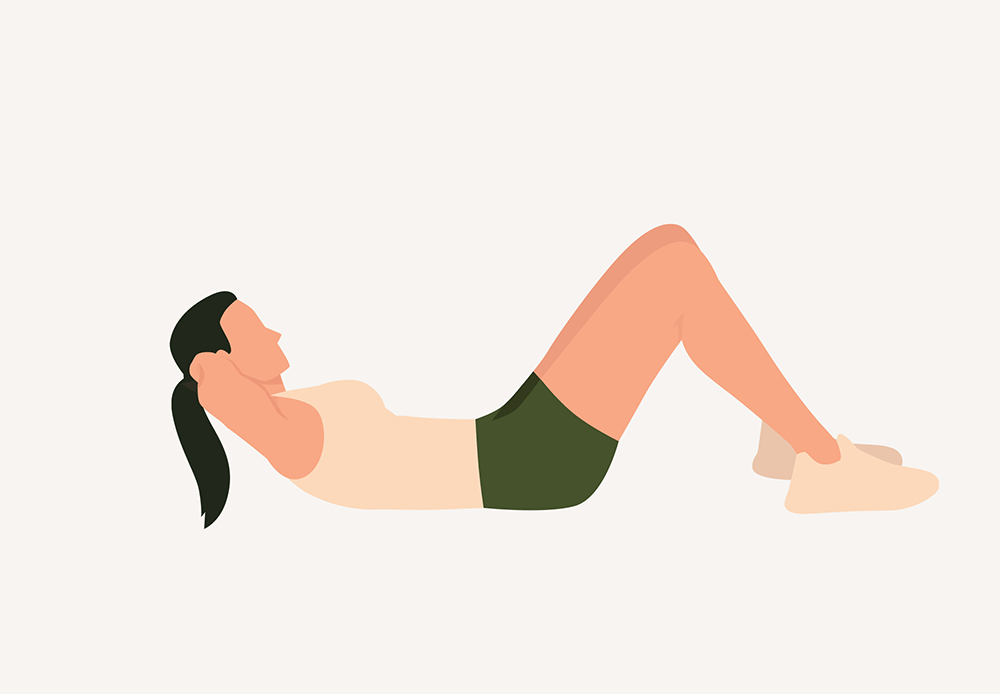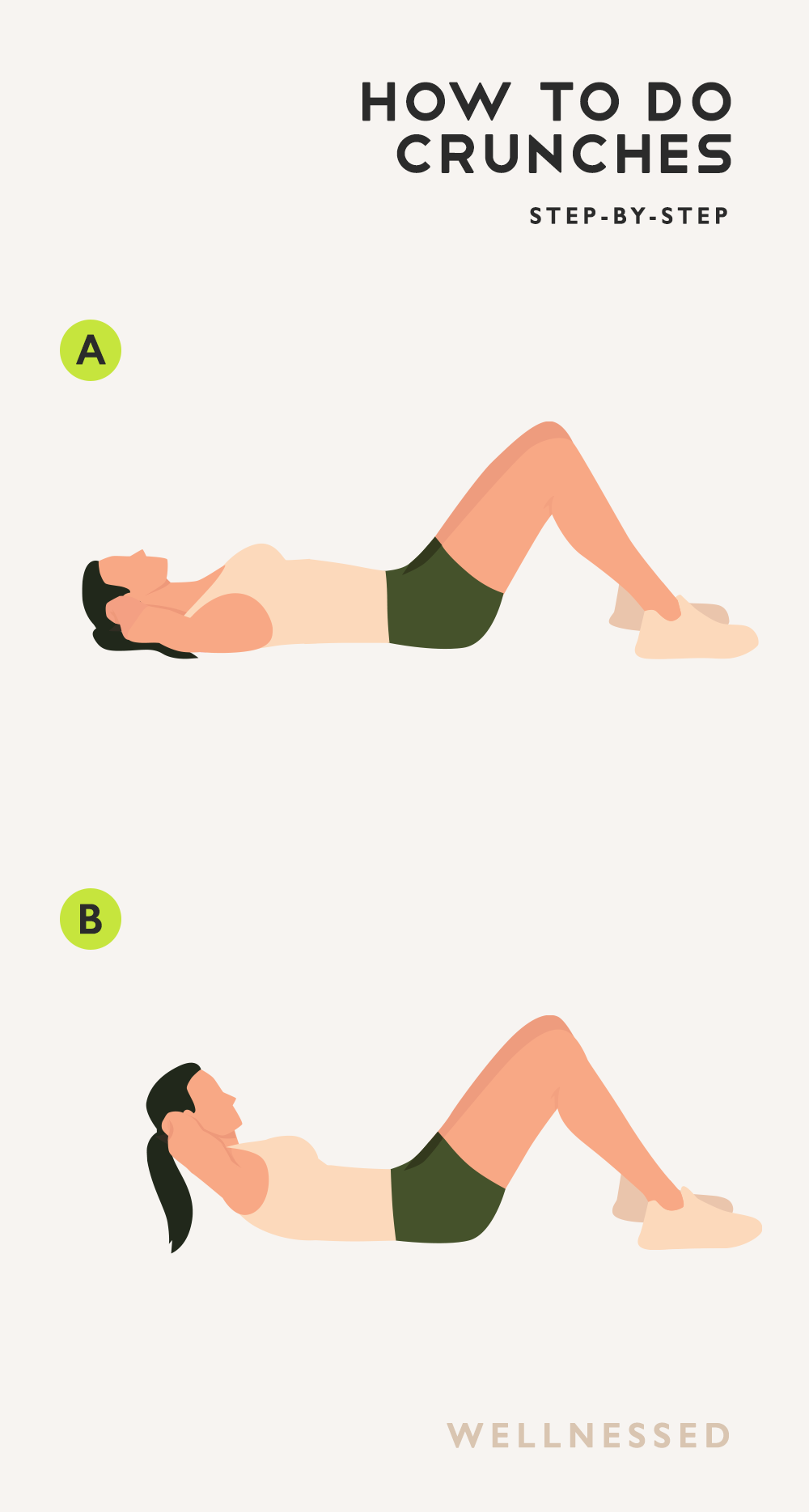- Main muscles worked: Abs (rectus abdominis)
- Other muscles: Side abs (external and internal obliques), hip flexors (iliopsoas)
- Exercise type: Isolation exercise
- Equipment: None
What are Crunches?
Crunches are a spine flexion exercise. A spine flexion exercise involves using your abs to pull your shoulders toward your hips or your hips toward your shoulders so your spine, when viewed from the side, resembles a C shape.
The traditional crunch involves about 30 degrees of spinal flexion (how high you lift your torso off the floor), which means the head and shoulder blades are only lifted a few inches off the ground. The lower-back remains on the ground.1 This is in contrast to sit-ups, another spine flexion exercise, in which the torso is fully lifted off the ground.
Benefits of Crunches
Crunches are an isolation exercise that targets the rectus abdominis (aka “six pack” muscles), which is one of the major core muscles. A strong core helps protect and support the spine, and facilitates good posture. It is important in performing everyday movements safely and with ease, as well as for better athletic performance.
The main issue with spinal flexion exercises such as crunches is spinal flexion. Many experts believe that repeatedly rounding your back can cause unnecessary strain on the intervertebral discs and increase the risk of pain or injury to the neck and back. They believe that bending the spine in this way should be saved for everyday tasks such as tying shoe laces.2
However, crunches involve less movement than sit-ups where the hip flexor muscles (which are attached to the lumbar spine) are very active and place greater stress on the back. This means the risk of injury from performing crunches is lower compared to sit-ups.
Although crunches have fallen out of favor and functional workouts (exercises that helps real-world activities) such as planks have become more popular, crunches still provide a viable way to work your rectus abdominis in one of its major roles – spinal flexion.
Who should not do crunches: A lot of us spend long periods sitting down in a bent forward position, so even more forward bending may be detrimental to posture and spinal health. If you have back or neck problems, speak to your doctor or physiotherapist before performing crunches.
There are many exercises to tone the abs without crunches, so don’t worry if you need to skip this move.
Tips
Crunches Common Mistakes
There are a few things that you can do to maximize your performance and minimize the risk of injury.
- Neck. Keep your neck and shoulders relaxed. Do not pull on your neck to try and crunch up further. This is dangerous and counterproductive, as the movement should be coming from your abs, not your neck. Think of pulling your rib cage towards your pelvis.
- Crunch with control. Perform this exercise slowly and with control. Avoid crunching up with momentum, as rapid movement shifts some of the work onto the hip flexors, which reduces the effectiveness of the exercise and increases stress on the lower back.
- Keep it low. Avoid crunching up too high and turning this exercise into a sit-up. Remember a crunch involves only a small range of motion.
- Belly fat. Don’t perform lots of crunches to try and lose fat from your belly. This is called spot reduction and doesn’t work. Research shows that crunches do not burn belly fat.34 To lose belly fat follow a balanced diet and include regular physical activity in your routine. Use crunches to strengthen and tone the underlying abdominal muscles. Find out the best exercises to lose belly fat.
- Muscular balance. Balance crunches with back extensions to prevent muscular imbalance and support better posture.
Crunches can be made more difficult by adding weight or using a stability ball. Other variations of crunches include moving the legs or arms to make this exercise more challenging.



